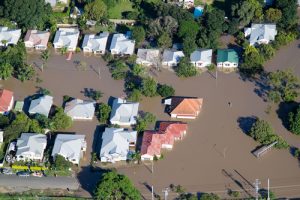
U.S. House Republican Whip Steve Scalise (R-LA) is concerned Americans will experience premium increases under a new pricing methodology called Risk Rating 2.0, which the Federal Emergency Management Agency (FEMA) is implementing as part of its updates to the National Flood Insurance Program.
FEMA says that the Risk Rating 2.0 methodology enables it to deliver rates that are actuarially sound, equitable, easier to understand, and better reflect a property’s flood risk.
However, in a Dec. 15 letter sent to FEMA Administrator Deanne Criswell, Rep. Scalise noted that families across his home state are expected to experience flood insurance premium increases under Risk Rating 2.0 and he urged the agency to provide immediate transparency about the methodology.
“Policyholders need more information on FEMA’s methodologies under Risk Rating 2.0, and this information should be widely available given its significant and potentially unsustainable impacts throughout the country,” wrote the congressman. “Louisiana families and families across our nation should not be left holding the bill for FEMA’s inability to be transparent about the very system it is already implementing.”
Rep. Scalise also wrote that since implementation for existing policies under Risk Rating 2.0 will not occur until April 1, 2022, he expects that his constituents’ concerns about increased premiums will be echoed by millions more families in the coming months.
“I am increasingly concerned that families across this country could drop their flood insurance, or in some cases even lose their homes, due to the unjustified and unaffordable cost of flood insurance under Risk Rating 2.0 despite communities’ efforts to mitigate and protect against future flooding, placing the viability of NFIP in jeopardy,” wrote Rep. Scalise.
In requesting transparency from FEMA regarding the Risk Rating 2.0 methodology, Rep. Scalise asked Criswell to explain how mitigation measures are taken into account and how individual risk is calculated under the new rating structure, according to his letter.



